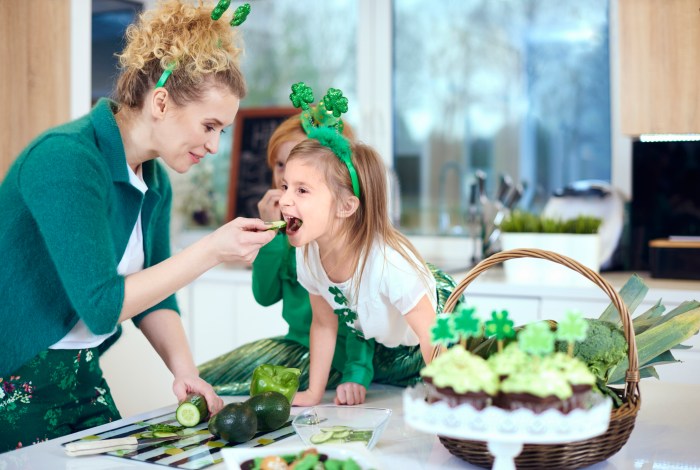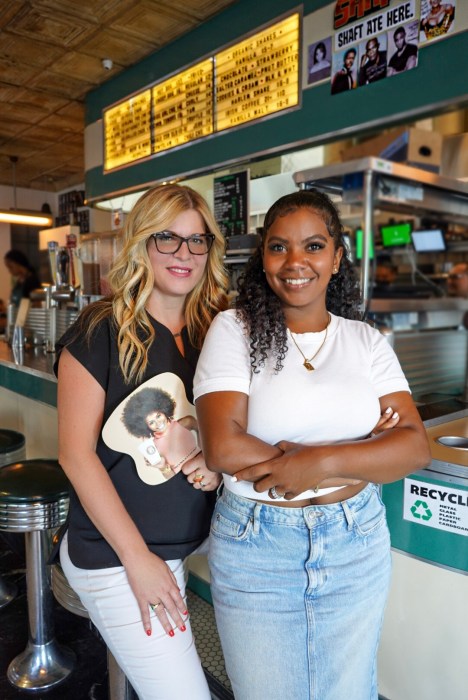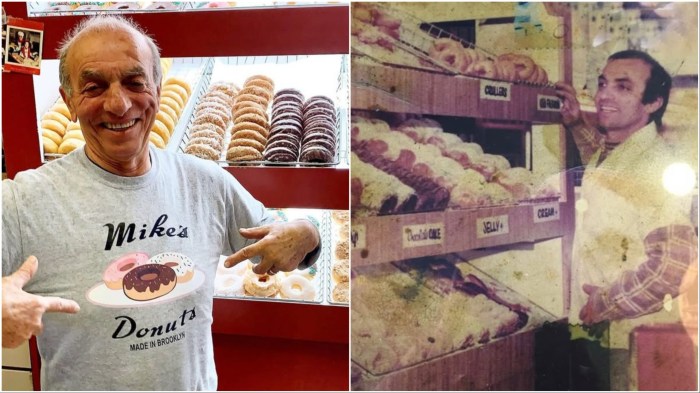
Liz Moody wants to get people eating together — even better if it’s over her cornflake “fried” chicken.
The Cobble Hill-based food writer is the author of the cookbook “Glowpops” and hosts the wellness podcast “Healthier Together.” Her latest cookbook, also called “Healthier Together” (out April 9), features more than 100 recipes for two — from fast and easy snacks to brunch staples to sweet treats — based on her travels and contacts in the wellness world (top names like Dr. Frank Lipman make an appearance).
amNewYork spoke with Moody, 32.
How did the phrase “healthier together” come about?
I’ve worked in the wellness world for a very long time, and I think that we talk about a lot of different things with parts of wellness, like what supplements should we take, and what should we be eating? I have come to believe that community is one of the most under-talked about and most important parts of wellness. … Healthier together is grounded in science and the fact that a number of studies show that it’s a lot easier to have success with a healthy lifestyle if you’re doing it with another person. But it was really born out of a deep belief that I have that we need to build community back in our lives any way possible. The notion of healthier together is we’re stronger together than we are apart.
Your first cookbook was more of a single topic and this one has a broader recipe focus. How did the recipes come together for this?
I wrote a newspaper column for seven years and during that time I traveled the entire world and looked for interesting topics to write about. So I’m really inspired by international cuisine. And also, as a wellness writer for so long, I was lucky enough to interview the top chefs in the country and also to speak regularly with the country’s best doctors. I view my role in the middle to synthesize the information coming from both of those sides and turn it into delicious recipes that are accessible for a home cook.
They’re mostly gluten-free, dairy-free — are there other rules or parameters that you followed for the recipes?
I spent a long time thinking about what a healthy diet was. What I landed on was gluten-free, or when there is gluten, it’s sourdough bread or something like that. Dairy-free, and that’s just to keep our hormones really balanced and to help fight inflammation and to make sure our guts are really healthy and happy. And then everything has as many vegetables as possible. One of the things that I found really interesting working with doctors is even if some of them believed in the paleo diet and some of them believed in the vegan diet, 80 percent of what they were recommending was the same thing, and they were sort of arguing about that last 20 percent of the plate. So 80 percent of my plate is going to be vegetable-based. That last 20 percent, I use meat in the book and I recommend people get pastured, grass-fed meat as much as possible. But meat is used more as a condiment rather than the center of your plate. Same with any sort of legumes or healthy grains.
You mentioned in the book how a lot of cookbooks don’t mention using frozen ingredients.
I think it’s because chefs are thinking about when they’re in the restaurant, and what is going to make the absolute best presentation and experience for their guest possible. So they have all those resources at their fingertips. And they’re also restocking their kitchen every single day; home cooks aren’t doing that. I’m a huge freezer advocate. Because one, it’s cheaper. But two, food begins to lose its nutrients the second it is picked. So if you get something that’s flash-frozen, often it will have a lot more nutrients in it than if it has traveled across the country, which is the case for much of our food, especially here in New York.
The book is focused on food. But what are other ways you embrace a healthy lifestyle?
I always say that wellness is a tool, it’s not an end unto itself. So if wellness is keeping you from living your happiest life, then it’s no longer wellness. With that in mind, I really try to calibrate between enjoying Milk Bar truffles, but also meditating every single morning. I also start the day with a green smoothie every single morning. I also try to work out. I do home workouts. I love the Bethany Meyers Become Project, which is just an online streaming workout. It’s a mix of Pilates, dance and yoga. I like it because I don’t get bored. I do that for 30 minutes every day. She’s in New York, you can go to her classes, but being able to do it at home I think just makes me feel like it’s more doable. I’m not a person who likes working out, I want to do it to feel better afterward. So if I can do it in my underwear on my apartment floor, I’m way, way more likely to do it.

Moody would be the first to tell you that she’s “kind of a trashy eater.” So it’s no surprise her cookbook features a section called “Better Than Takeout.” “I like to do the kind of gross food that you grew up with, but made healthy,” Moody says. That includes a take on pad see ew that swaps out flat noodles for zucchini noodles. “You can literally use a vegetable peeler to make those wide noodles,” Moody says. “So you don’t need any extra equipment, which I feel like is important for New Yorkers.”
Zucchini noodle pad see ew
Serves 2
For the steak
- 5 oz. flank steak from grass-fed cattle, cut into 1/8-inch-thick, bite-size slices
- 1/2 tsp. fine-grain sea salt
- 1/2 tsp. tamari or soy sauce
- 1 tsp. avocado oil
- 1 tsp. coconut sugar
For the stir-fry
- 2 medium zucchini
- 1/2 tsp. fine-grain sea salt
- 1/3 cup raw cashews, roughly chopped
- 1 tbsp. plus 2 tsp. avocado oil
- 1 tbsp. peeled, minced ginger
- 3 garlic cloves, minced
- 1 small bunch bok choy (about 1/2 to 3/4 pound), chopped (leaves and stems separated)
- 2 tbsp. tamari or soy sauce
- 2 tsp. rice vinegar
- 1 large egg, beaten
- Sriracha, to serve (optional)
1. Marinate the steak: Combine the steak, salt, tamari, avocado oil, and coconut sugar in a large zip-top plastic bag. Shake to coat and marinate at room temperature for at least 20 minutes or in the refrigerator for up to 24 hours.
2. Make the zucchini noodles: Use a vegetable peeler to slice the zucchini into long, thin ribbons — I like to cut a small piece, lengthwise, off the bottom of the zucchini so it rests it flat on the cutting board, then hold it long-side down and drag the peeler toward me. Place the zucchini noodles in a strainer set over a bowl or in the sink and sprinkle with salt, tossing to coat. Let drain for at least 10 minutes or up to 30. Pat the noodles dry with a clean kitchen towel.
3. Heat a dry wok or large skillet over medium heat. Place the cashews in the dry skillet and toast, stirring frequently, until the smallest pieces have turned golden brown, about 3 minutes. Remove the cashews from the pan.
4. Return the pan to medium-high heat and add 1 tablespoon of oil. When it shimmers, add the ginger, garlic, bok choy stems, tamari, and 2 tbsp. of water, and cook, stirring frequently, for about 4 minutes, until the bok choy is crisp-tender. Add the bok choy leaves and rice vinegar and cook until the leaves wilt, 1 to 2 minutes. Push everything to one side of the pan and add the egg to the other; cook until almost set, then toss with the vegetables to combine. Transfer to a medium bowl.
5. Wipe out the pan, return it to medium-high heat, and add the remaining 2 tsp. of oil. When it shimmers, add the beef, allowing the excess marinade to drip off it as you pull it out. Cook, stirring frequently, until seared on the outside and not quite cooked through, about 4 minutes. Add the zucchini noodles to the pan and toss to coat with the oil in the pan (I like to use two wooden spoons to do this). Spread the noodles out in the pan and let them cook for a minute or two, until they just begin to brown. Turn the heat off. Add the bok choy and egg mixture back to the pan and use your spoons to toss until the noodles are coated and all the ingredients are well distributed.
6. Divide the pad see ew between two plates and top with the toasted cashews and sriracha, if desired, to serve.
Reprinted from “Healthier Together: Recipes for Two — Nourish Your Body, Nourish Your Relationships © 2019 by Liz Moody. Published by Clarkson Potter, an imprint of Penguin Random House.
IF YOU GO
Liz Moody will be in conversation with Ali Maffucci and Serena Wolf on April 9 at 7 p.m. at ABC Carpet & Home | 888 Broadway | tickets $35 at eventbrite.com





































